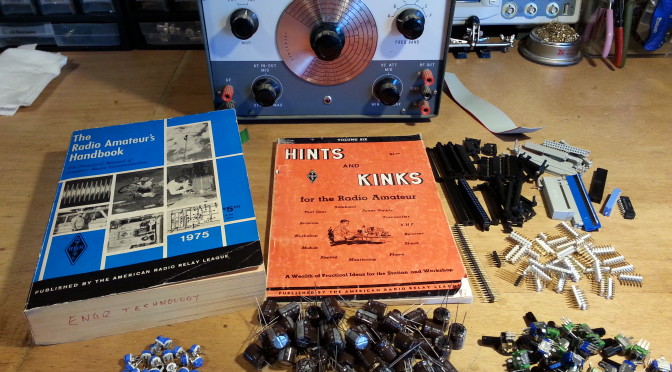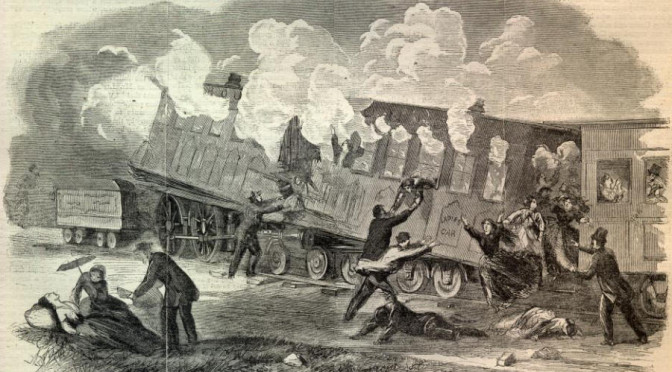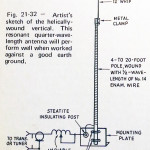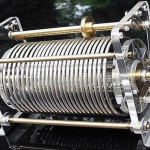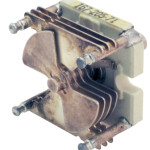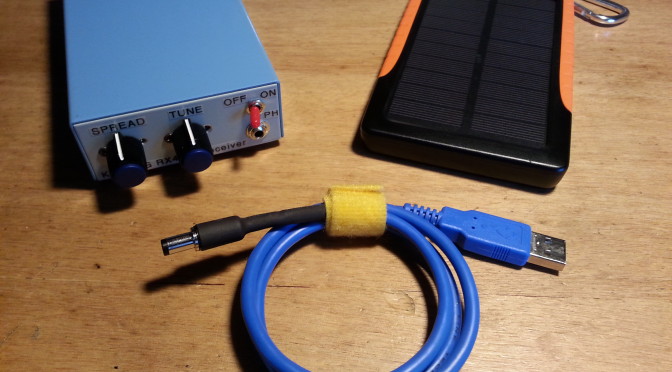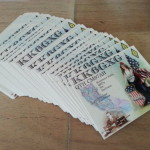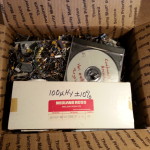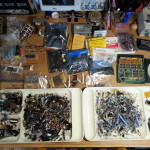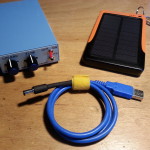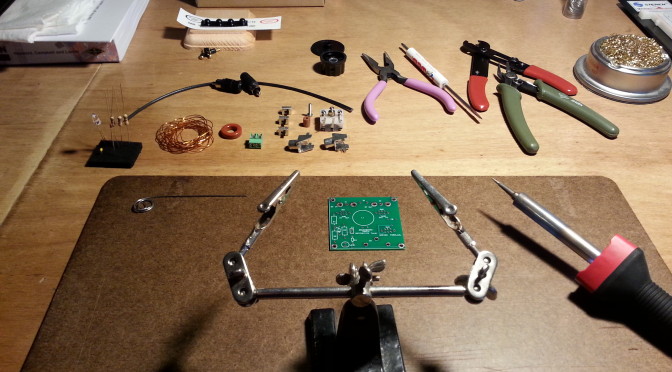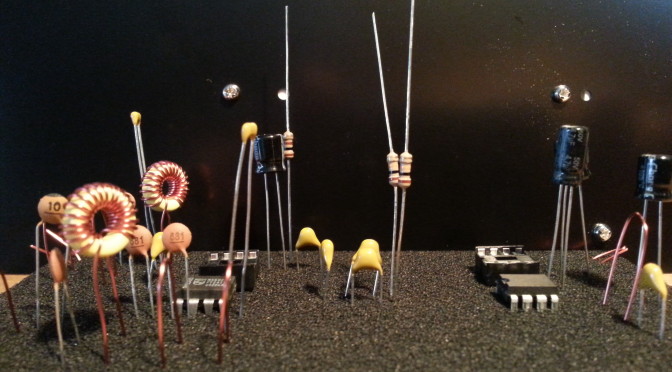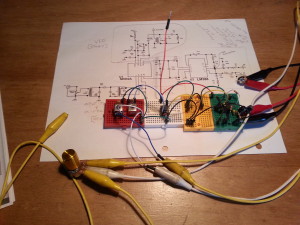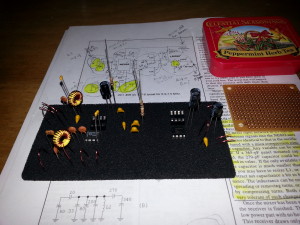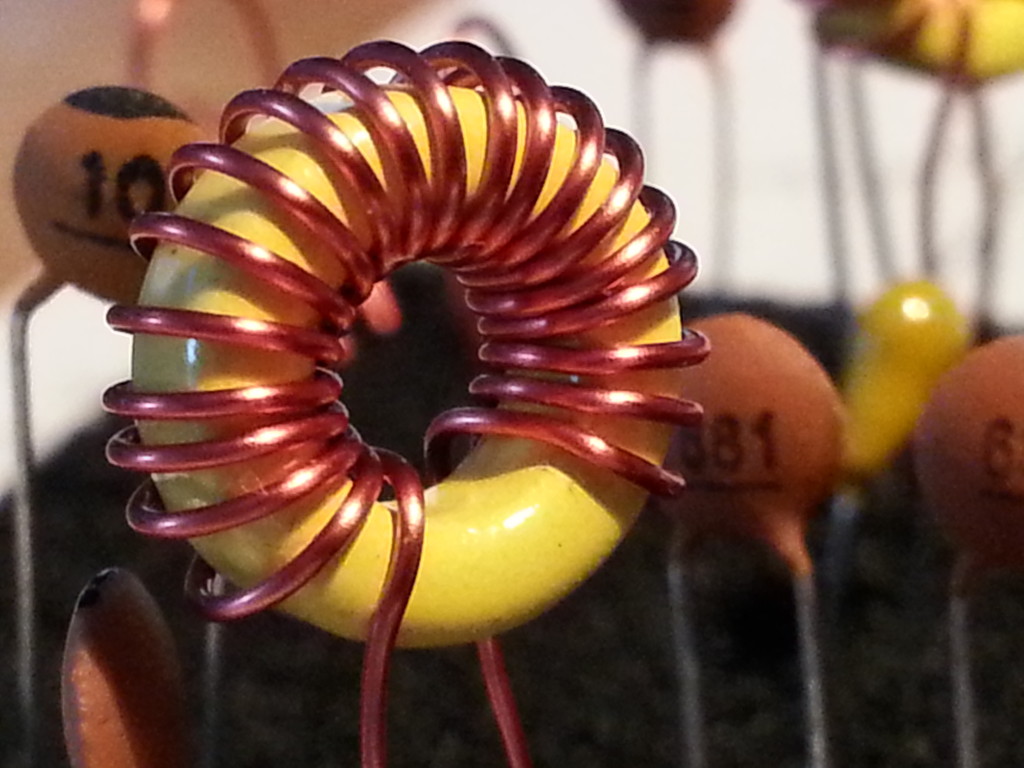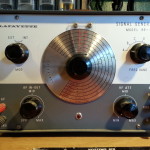
On Saturday I picked up a few things at the De Anza Electronics Flea Market. The most impressive acquisition would be the Lafayette Signal Generator for $20.
I have been needing one and I was dreading the prospect of having to build one and having a tough time without the right tools for calibrating it, so this was a great find and a steal of a value, though I didn’t know it for sure until today.
One thing I have learned about buying used electrical/electronic equipment, particularly in at a flea market, is that you have to take your time and open it up, get documentation, inspect and clean the equipment before attempting to use it, or plug it in for that matter.
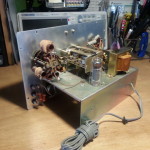 Sunday was opening day. I noticed right away that I would need to replace the power cord grommet as it was in two pieces. I didn’t actually get to anything else until today.
Sunday was opening day. I noticed right away that I would need to replace the power cord grommet as it was in two pieces. I didn’t actually get to anything else until today.
Today I inspected all of the wiring and components, looked for hot spots and anything that would indicate an over heat. Having found nothing of the sort I moved on to cleaning, which there was surprisingly little to do. I made sure the tubes were cleaned and had no fingerprints on them. Now that I have a piece of tube equipment I will need to get a tube tester. 😉
With the cleaning done it was time for the plug-in and smoke tests. No pops and and no smoke! I let everything warm up and burn in for a good twenty minutes before starting any tests.
Testing with the oscilloscope began with the AF (audio frequency) side of the generator. After the twenty minute warm up period the “approximately 400 cycles” audio tone as specified in the manual turned out to be stable at 388 cycles (Hertz). I can work with that.
“kc” is kilocycles. The term is essentially the same as the more familiar kilohertz along with “mc” megacycles being the same as megahertz. The change over in terminology occurred slowly from the mid 70s to the mid 80s. Many hams still use kc and mc. I use them interchangeably depending what I am referencing or who I’m talking with. This piece of equipment has frequency labeled on the dial as kc and mc.
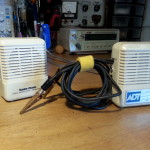 Moving on… The generator did its first diagnostics job with a portable amplifier I have had for a very long time (the one on the right). I clipped on the amp to the audio out and it turn out the volume control on the amp is trashed from banging around in my tool bags for a couple of decades so I will need to replace the potentiometer in that this weekend.
Moving on… The generator did its first diagnostics job with a portable amplifier I have had for a very long time (the one on the right). I clipped on the amp to the audio out and it turn out the volume control on the amp is trashed from banging around in my tool bags for a couple of decades so I will need to replace the potentiometer in that this weekend.
I then moved over to the RF (radio frequency) side of the generator and clipped on the oscilloscope. The RF side is divided into 5 switchable bands. I checked each band by referencing the frequency on the dial with the frequency on the O-scope. All five bands checked out very closely to the dial. A little lead or lag here-and-there, but overall pretty close for this equipment and its age which I’m guessing is about as old as me (made in the mid/late 60s).
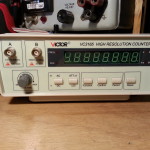 The frequency counter I purchased last year has been giving me problems. New equipment, cheap (figuratively and cost), and no manual. With the help of the new sig gen and the oscilloscope I managed to fix a couple of minor problems and figure out the modes on the counter in the process. Looks like the electronics bench is finally coming together.
The frequency counter I purchased last year has been giving me problems. New equipment, cheap (figuratively and cost), and no manual. With the help of the new sig gen and the oscilloscope I managed to fix a couple of minor problems and figure out the modes on the counter in the process. Looks like the electronics bench is finally coming together.
Now that I can check the receivers I build I can also check the transmitters I plan on building. I can also check portions of the radios as the construction moves forward. I plan on building more of my own test equipment but it’s nice to have a reference point or two to calibrate off of.
I also did some diagnostics on the 40 meter direct conversion receiver project and updated the project page… some very interesting results, you should take a look. 🙂
A productive day I think.
73,
~Jon KK6GXG

